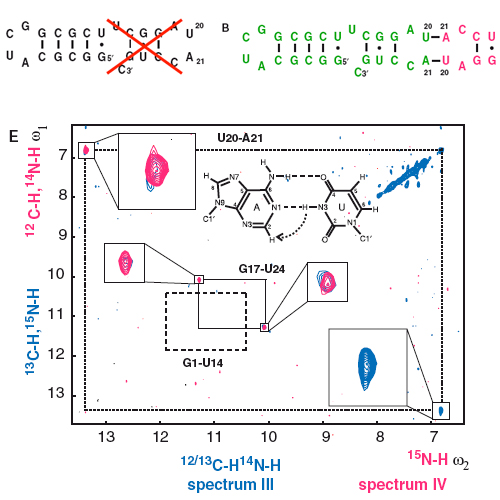A NMR strategy to unambiguously distinguish nucleic acid hairpin and duplex conformations applied to a Xist RNA A-repeat
05-Nov-2008
Nucleic Acids Research, 2008, 36, 22, 7068 - 77 published on 05.11.2008
Nucleic Acids Research, online article
Nucleic Acids Research, online article
Structural investigations are frequently hindered by difficulties in obtaining diffracting crystals of the target protein. Here, we report the crystallization and structure solution of the U2AF homology motif (UHM) domain of splicing factor Puf60 fused to Escherichia coli thioredoxin A. Both modules make extensive crystallographic contacts, contributing to a well-defined crystal lattice with clear electron density for both the thioredoxin and the Puf60-UHM module. We compare two short linker sequences between the two fusion domains, GSAM and GSPPM, for which only the GSAM-linked fusion protein yielded diffracting crystals. While specific interdomain contacts are not observed for both fusion proteins, NMR relaxation data in solution indicate reduced interdomain mobility between the Trx and Puf60-UHM modules. The GSPPM-linked fusion protein is significantly more flexible, albeit both linker sequences have the same number of degrees of torsional freedom. Our analysis provides a rationale for the crystallization of the GSAM-linked fusion protein and indicates that in this case, a four-residue linker between thioredoxin A and the fused target may represent the maximal length for crystallization purposes. Our data provide an experimental basis for the rational design of linker sequences in carrier-driven crystallization and identify thioredoxin A as a powerful fusion partner that can aid crystallization of difficult targets.











